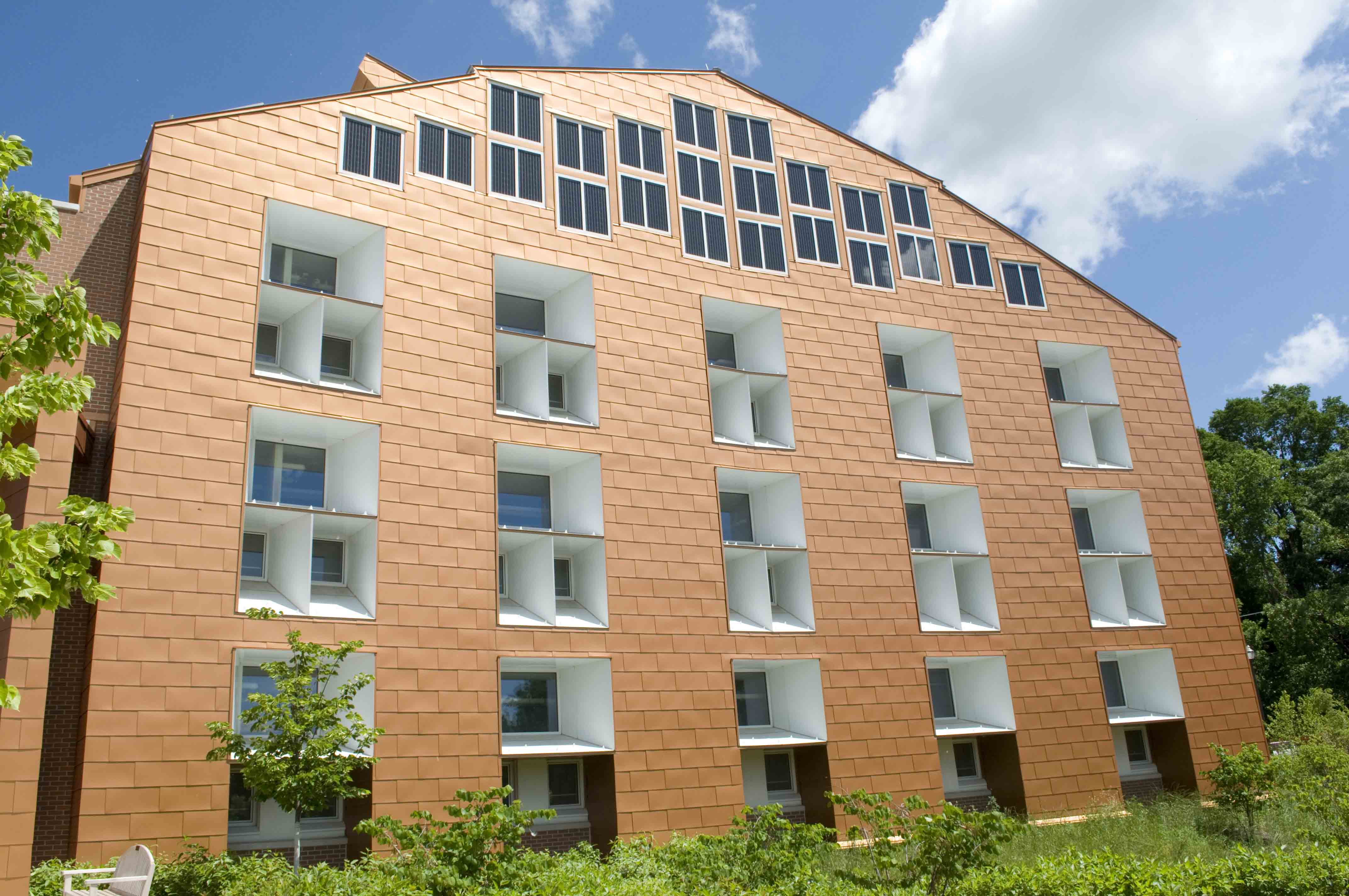Judson University in Elgin, Ill., recently experienced some enviable challenges: continuous growth in its fledging architectural and design program had led to less classroom, meeting and office space, and the university had also outgrown its current library.
School officials came together and concluded that a new facility was needed, with one major priority—the building had to be as sustainable as possible. Judson conducted an outside competition to select the best design to meet its specifications. In doing so, the university was able to solve its unique design challenges and give its architecture students the opportunity to witness a new project from start to finish, right on campus.
Short & Associates of London was selected as the winning architect for its unique metal roof and wall panel design capabilities, its experience in reducing solar consumption and emissions, and its expertise in utilizing natural ventilation systems to increase sustainability. To create the building’s custom-fabricated wall panels and overall exterior design, Short & Associates selected Wiesbrook Sheet Metal (Elgin, Ill.) to collaborate with metal wall panel manufacturer McElroy Metal (Shreveport, La.).
Because using true copper panels for the project would have posed the risk of theft and would have increased project costs, McElroy Metal provided over 104,000 sf of 4’ x 10’ flat metal sheets with Valspar’s signature Fluropon Copper Penny coating for the wall and trim, as well as over 24,700 sf of Medallion-Lok roof panels with Valspar’s Fluropon Ash Gray coating. Valspar’s Fluropon coatings were selected not only for their durability and gloss retention, but for their high solar reflectivity and emissivity. The coatings played a key role in creating a cool metal roof, reducing the building’s energy consumption and heat island effect.
In addition to the cool metal roof, other sustainability features of the new building include exterior walls that sit four feet from the concrete structure to utilize the natural tendency of warm air to rise, creating a vacuum that draws cool air in from the bottom, circulates it and exhausts it through rooftop ventilators.
A basic mechanical heating and cooling system provides essential temperature control during the months when the natural mode isn’t possible. The building also features an integrated photovoltaic system to generate electricity, as well as landscape features that provide storm water control and increased biodiversity.
The completed four-story, 88,000-sf building is divided to serve three functions, with classroom space, academic offices/studios, and the library wing. The building areas are joined together by a bowtie-shaped link that is designed to provide additional classroom space and a gallery.
The project required six months from the mock-up until the actual installation of the Valspar Fluropon-coated wall and roof panels began, and 15 months for completion. The final result was the first truly “green” college building in the United States—achieving a Gold LEED Rating by the U.S. Green Building Council.
For more information on Valspar, visit www.valsparcoilextrusion.com.
Related Stories
| May 18, 2011
Raphael Viñoly’s serpentine-shaped building snakes up San Francisco hillside
The hillside location for the Ray and Dagmar Dolby Regeneration Medicine building at the University of California, San Francisco, presented a challenge to the Building Team of Raphael Viñoly, SmithGroup, DPR Construction, and Forell/Elsesser Engineers. The 660-foot-long serpentine-shaped building sits on a structural framework 40 to 70 feet off the ground to accommodate the hillside’s steep 60-degree slope.
| May 18, 2011
New center provides home to medical specialties
Construction has begun on the 150,000-sf Medical Arts Pavilion at the University Medical Center in Princeton, N.J.
| May 18, 2011
Improvements add to Detroit convention center’s appeal
Interior and exterior renovations and updates will make the Detroit Cobo Center more appealing to conventioneers. A new 40,000-sf ballroom will take advantage of the center’s riverfront location, with views of the river and downtown.
| May 18, 2011
One of Delaware’s largest high schools seeks LEED for Schools designation
The $82 million, 280,000-sf Dover (Del.) High School will have capacity for 1,800 students and feature a 900-seat theater, a 2,500-seat gymnasium, and a 5,000-seat football stadium.
| May 18, 2011
Carnegie Hall vaults into the 21st century with a $200 million renovation
Historic Carnegie Hall in New York City is in the midst of a major $200 million renovation that will bring the building up to contemporary standards, increase educational and backstage space, and target LEED Silver.
| May 17, 2011
Redesigning, redefining the grocery shopping experience
The traditional 40,000- to 60,000-sf grocery store is disappearing and much of the change is happening in the city. Urban infill sites and mixed-use projects offer grocers a rare opportunity to repackage themselves into smaller, more efficient, and more convenient retail outlets. And the AEC community will have a hand in developing how these facilities will look and operate.
| May 17, 2011
Architecture billings index fell in April, hurt by tight financing for projects
The architecture billings index, a leading indicator of U.S. construction activity, fell in April, hurt by tight financing for projects. The architecture billings index fell 2.9 points last month to 47.6, a level that indicates declining demand for architecture services, according to the American Institute of Architects.
| May 17, 2011
Sustainability tops the syllabus at net-zero energy school in Texas
Texas-based firm Corgan designed the 152,200-sf Lady Bird Johnson Middle School in Irving, Texas, with the goal of creating the largest net-zero educational facility in the nation, and the first in the state. The facility is expected to use 50% less energy than a standard school.




















